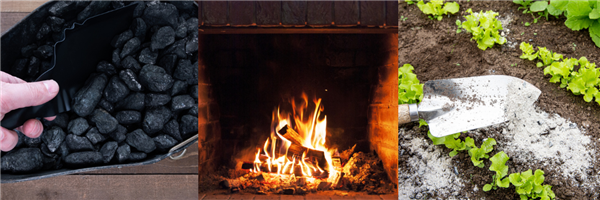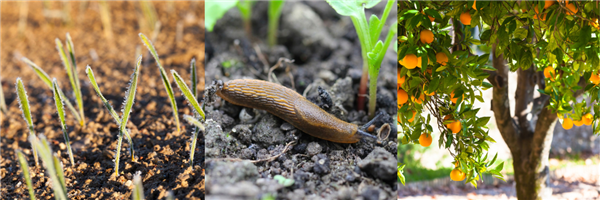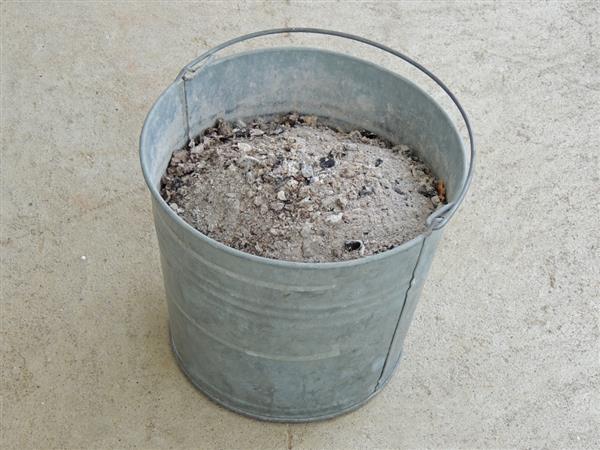Wood Fire Ash and Coals
After the wood fire hot coals and ash from your fire have died down, don't put them in any of your kerbside bins.
Coals and ash retain their heat, long after the fire has burned out. If not disposed of correctly, this can cause fires & significant damage to service vehicles, but more importantly, put the drivers at risk!
Ways to dispose of coals and ash
If you have excess wood fire ash or coal in your fire place, here are some alternate ideas for you to use and dispose of them:
Chunky Coals – If you are able to keep the chunkier charcoal pieces, it is best to retain those in your fire place or fire pit as they will help kick along your next fire and get heat cranking faster than an empty fire place or fire pit being started with wood alone.
In the Garden – Wood ash is alkaline so there are some benefits to using it in the garden around plants that can tolerate lime or alkaline soils. A handful of wood ash at the time of planting citrus plants or roses, helps boost their growth and development. However, when using as a fertilizer, make sure it is not applied thickly and be sure to water it down, so that it doesn’t blow around the garden or through your windows! You should also ensure that the ash is cold, and has retained no heat to prevent any garden fires starting!
Plants that like wood ash include lavender, roses, citrus plants, hydrangeas, onions, garlic, stone fruit trees, chives, lettuces and asparagus.
Visit Gardening Australia, for more information about using wood fire ash and charcoal in your garden.

Why is wood ash good for the soil and garden?
Being high in calcium carbonate, wood ash:
- Adds nutrients to the soil
- Reduces acidity in soils
- Speeds up the decomposition of organic matter
- Is naturally high in potassium (aids flowers & fruits), has phosphorous and an inventory of micronutrients such as manganese, iron and zinc
- Can be a great natural and cheap pest insect and slug deterrent or solution around seedlings (as long as it doesn’t come in to contact with the seedlings). It irritates the slugs body on contact so they don’t cross over a line circled around your plants, leaving no gaps they could sneak through. You could also lightly dust it on your plants if it is not too windy to form a light coverage if slugs are an issue on the plant.
- Charcoal dug into the soil
can help prevent nutrient runoff as it holds the nutrients to it and makes them
available for plants. Gardening Australia suggests digging a trench, lay
the charcoal in the trench, backfill and then plant over the top.

Wood ash in your compost bin helps
neutralise what is typically an acidic environment, speeding up the
breakdown of those organics. Plus, the worms in there will be happier!!
When neutralising acidic soils,
wood ash is half as effective as lime and a soft guide apply about 50-70g per m2 . It is best to do this in winter, ensuring that it is not a windy day,
you’re wearing gloves and consider wearing a mask to prevent inhaling in to
your lungs.
You would need to add quite a lot of wood
ash to make your soil too alkaline but testing your soil pH annually can be a good idea. It shouldn’t go above 7.0-7.5. A soil
that is too alkaline, means plants won’t thrive as it inhibits a plants ability to
absorb nutrients and can lead to stunted growth, yellow leaves and worse - the death
of a plant.
Does it matter what wood I burn?
Burning different types of wood can vary the amount of wood ash left behind. Hardwoods typically produce more wood ash and have a higher percentage of nutrient value than softer timbers such as pine.
NEVER burn timbers treated with chemicals or use its ash in your gardens, as it could be harmful to humans, animals and plants.
How do I store wood ash for use later on?
As the nutrients in wood ash are soluble it needs to be kept dry. Until you are ready to use it, keeping a container with cool wood ash outside in a dry place is best practice.
Reusing a metal bin or container with a metal lid is the safest option (e.g a large coffee tin or metal bucket). Make sure the lid is secure and air tight. It is best to store this container on a concrete, brick or stone surface and never store on any timber or plastic surfaces.
Always use CAUTION when moving and storing your wood ashes to ensure no new fires are started accidently. While they may look cool on top, there can be sneaky under the surface embers lurking and with increased airflow, could reignite.
